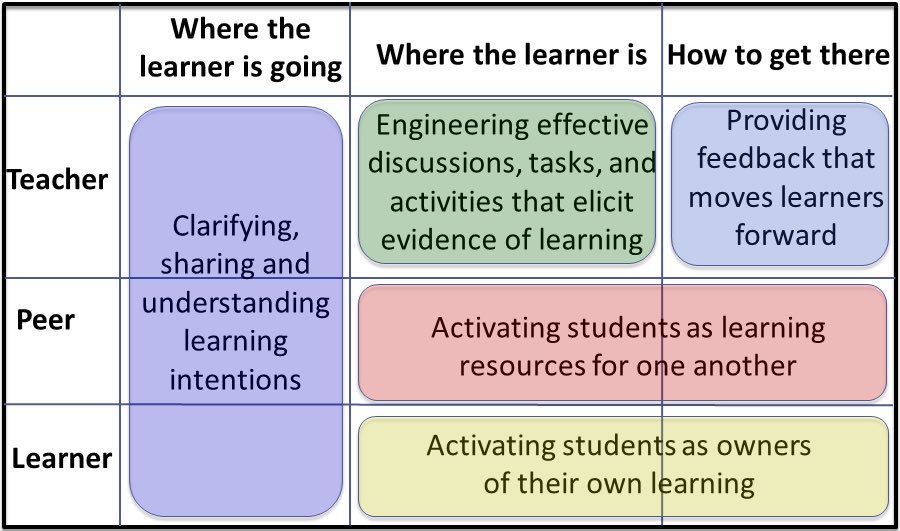The pandemic seems to be hitting us back and forth leaving no room for surprise. Once again all Board exams seem to be deferred or canceled leaving us with the option of falling back on our year-round online assessments. I am confident every school did their task of assessing students for knowledge, skills, and aptitudes but will we be successful in giving a fair report. Let's ask ourselves these questions.
- Are our teachers trained for AFL?
- Are they equipped with the necessary digital tools and expertise to roll it out to our students?
- Are our students digitally savvy and have access to digital tools?
The recent Teacher Tech Summit held on 17th April 2021,'Teachers will lead the digital learning revolution in schools' truly gave a glimpse on varied AFL strategies which we can seamlessly incorporate into our classrooms.
So, let me begin with the meaning and need for AFL.
As per CAIE, Assessment for learning (AfL) is an approach, integrated into teaching and learning, which creates feedback for students and teachers in order to improve learning and guide their next steps.
So let us visit understand how AFL can be incorporated within the curriculum:
1. Using a range of tools - Most of us are savvy with Google forms, MS Forms, Kahoot. Let me show a few more.
a. Quizlet - A tool where you create learning material for your students and then they can refer to it at their own convenience and keep assessing themselves till they have mastered the concept. All you need is to create your study set ingeniously so that there is an application to real life too. The video shared by me will guide you on how I created a simple set of terms in the chapter, 'Motion in one dimension' for students to understand to move on to more challenging terms.
https://drive.google.com/file/d/1PZdyeGKd5ZHWwrugWdunR_cRYXGMXIl1/view?usp=sharing
Students learn at their own pace and build their confidence on conceptual terms.
b. Plio - Convert any YouTube video into an interactive lesson plan (a plio) by overlaying questions at specific timestamps in a few minutes and simply replace the YouTube link with a link to the Plio https://plio.in/. Let me show you how we can use it in the classroom. https://drive.google.com/file/d/1Jcb2NINszqvq6Cl4Aqen5CBmdblBdafb/view?usp=sharing
c. Multimedia platforms for role play, journaling, audio recording like Audacity, Mote [https://www.justmote.me/] which allows one to share stories, podcasts and receive feedback. Loom also helps groups to create quick online videos with PowerPoint presentations or videos.
2. Move to more open book, challenging application-based questions where students cannot find direct answers on the net or textbook. This will promote deep thinking, collaborative and research work and support building 21st-century skills.
Instructions: You need to work in groups of 4 where one is the group leader, one is the researcher, one is material manager and one is the technologist. The rubric is attached for further directions.
Ex: We need to build a colony on Mars for 10000 people. We need to carry people from here. Design a spacecraft for their travel arrangements and guide them on travel protocols. How will you create living conditions for them on Mars so that they have access to good food, safe homes and social entertainment? You will receive the link to necessary resources and materials.
3. Make AFL your primary assessment tool - Assessment drives learning but the critical question is 'What type of assessment? If we ask rote-based questions, we will design our lesson plans where students are expected to remember, understand apply. If we expect students to demonstrate their own agency and independence through research projects, case studies, multimedia media presentations then it gets incorporated within the lesson plans.
Dylan William's five brilliant formative assessment is an excellent guide:
The teacher has to share the learning intentions, be able to engineer the learning activity to elicit evidence of learning, and provide feedback that helps learners to move forward.
If everybody has high levels of shared understanding of learning intentions then peers can be great supports for each other. For ex: you conduct an individual math test for the student and have them do a similar test with 2 or 3 peers where they become learning resources for each other and this collaboration becomes dynamic learning leading students to become owners of their own learning.
Last year we were new to the pandemic but this year, we know the way forward so why not embrace AFL and move away with the dogmatic mark-driven assessments. I agree the road ahead to embed AFL will be challenging as it demands a radical mind-shift on part of the parents, teachers, management and authorities but eventually celebrates our student's uniqueness and potentials and that outweighs all roadblocks.
References:
1. https://teacherhead.com/2019/01/10/revisiting-dylan-wiliams-five-brilliant-formative-assessment-strategies/
2. Assessment for learning: what, why, and how? - https://www.youtube.com/watch?v=eMX5nfogEYE&t=1833s
3. The Teacher Tech Summit: Teachers will lead the digital learning revolution in schools - https://www.youtube.com/watch?v=myt2poF_7dg&t=10588s



Hello Kavita,
ReplyDeleteYou make great points - and with resources :)
I totally agree with you when you say, 'If everybody has high levels of shared understanding of learning intentions' This is crucial. You ask whether our teachers have the necessary training (or experience) in AfL but I think before that can happen, the learning intentions need to be clarified - are young people going to school to learn subjects and the skills needed to be successful in them or are they going to school to develop as holistic learners in the context of subjects - thus learning to learn, learning to develop as learners, and having a better chance of understanding what they are learning? Which we choose, affects how we approach education, how we teach, how young people learn and how we assess them. So, we can only really get the assessment right once we have decided on why young people are going to school. I think the NEP offers us a way forward with that.